QuestionHi Diane,
Recently I've been e-mailing with Tracie, but it says I have to ask someone else, so here I am. I hope you can help me. Here are the messages exchanged back and forth before this.
QUESTION: Hi, I'm having a little trouble handling my bearded dragon. I really don't know why, when I first got him he was the friendliest lizard! We bonded straight away and he would just sit really calm on my shoulder or in my hand as I gently stroked his scales. Then all of a sudden, one day when I went to get him out of his tank, he started to run away when I try and pick him up. Now he never wants to be held and when I do manage to get him out of the tank he tries to run away! I just don't get it, he's eating more than he ever did, his tank temperature is fine and I take really good care of him! What could have suddenly caused this change of heart and what can I do to get my friendly beardie back?
ANSWER: Hello Carly,
How old is your dragon, & is it male or female?
Is he bearding you or trying to bite you or does he hiss at you?
What type of UVB light are you using right now? What type & brand is it a florescent tube bulb or a compact or coil light?
What type of basking light are you using right now, is it a bright white light or a colored light?
Has anything else around changed, in or outside of his tank?
Tracie
---------- FOLLOW-UP ----------
QUESTION: Tracie,
My dragon is only about two and a half months old so I'm not sure of its gender yet. He doesn't beard, hiss, or bite, he just tries to run. My UVB light is an ESU Reptile Slimline light and it is a florescent tube bulb. My basking light is an All Living Things 100 watt light and it is a bright white light. Originally, I just had the UVB but I realized that he just wasn't getting enough heat so I went out and bought the basking light. He seemed to love it and it keeps his tank at a good temperature. Though, his strange behavior seemed to start right after I bought him this light. I can't just get rid of the light because then the temperature would drop to low. What do you recommend I do?
Carly
P.S. The picture attached was taken before I bought the basking light.
--------------------------------------------------------------------------------
Answer Hello Carly,
Well, actually for his age, that is somewhat normal to be a little skittish. He seems healthy then.
Hm, well, does the ESU say 7%? Those UVB lights, I hate to say, emit basically no output at all. That brand is very very poor, so I recommend that you get another UVB light as soon as you can since it is imperative at his age to receive proper UVB lighting so he can absorb calcium properly.
Try getting a Reptisun 10 florescent tube bulb or a Reptiglo 8 florescent tube bulb. Please stay away from the Reptiglo 10 florescent tube bulbs, ANY compact or coil lights, & ANY ESU & or Zilla UVB lights.
The basking bulb, how close is it to your dragon & where is it placed? Ideally, the basking light & the UVB light should be placed together right by each other at one end to focus heat along with UVB for the main basking area. The lights, both the basking light & the UVB should be 8 inches from your dragon.
You can order a Reptisun 10 & the Reptiglo 8 from here:
www.reptilesupply.com
www.bigappleherp.com
www.petmountain.com
What are you using to measure the temps, a stick on type of thermometer, or a digital probe or a temp gun? What are the temps currently on the basking end & the cooler end?
Tracie
Well, I'm taking Tracie's advice on the UVB light, but right now I'm snowed in so I can't go out and buy one. Anyway, just a few minutes ago I tried handling my bearded dragon again and this time, for the first time ever, he hissed and bearded at me! I figured he should be left alone so I just put some crickets in his cage and left him to it. Like I said, I started noticing this unfriendly behavior as soon as I got him the basking light. As an answer to Tracie's question, I use a stick on thermometer and highdrometer. However, it is very sticky so I couldn't attach it to the other side of the tank to take the temperature. It is currently on the cooler side, the side without the lights and it is at 80 degrees Fahrenheit.
P.S. He is currently in a 20 gallon tank.
Carly
AnswerHi Carly,
I am giving you my basic care sheet so you can have access to good uvb info...the link in that section will take you to where you can see pictures of the lights that we recommend not to use. In the care sheet you will see info on a good thermometer to use and where to place the probe it comes with.
Reptiles can be funny...they get good lighting and heat and they think they are the macho kings of the world. It sounds like the little monster is really trying to assert himself as wanting to be the boss. When you go to pick him up, are you doing so from over top or going from under him? The over top can scare them, they think you are some big evil monster that is trying to make dinner of them.
Do you have a really secure room, such as a bathroom that you can allow him to explore? A few areas that you will need to secure in the room would be under the doors and under any cabinets that have a space up and under the front...also be sure to close the toilet.
Just sit in there with him and let him wander around and climb on you if he will. Offer him some greens from your hand... I like using the "hand over hand" to allow them to think they are getting away but they are actually just going from one hand to the other.
I hate to call them battles when you are trying to hold him..but..to an extent that's what they are. He wants to be the boss and you need to be the boss. If you are concerned about him biting you, a pair of thin gloves will give your the security and protection if he decides to bite. Once he finds that you don't care if he bites or acts goofy, he should settle down and find out that your company is pretty neat! You don't want to traumatize him with making him allow you to hold him...but the allowing the climbing on you, etc in the safe room should help him realize you aren't a bad evil person...but someone that gives him goodies free roam time.
Hope this all has helped you out a bit!!
BASIC BEARDED DRAGON CARE:
HOUSING:
For an adult bearded Dragon, a 50 -55 gallon is the smallest recommended tank. For a baby, nothing less than a 30 gallon tank will work for a very short time, so its best to just start out with the adult sized tank....you can add rocks and branches for climbing, being sure to not stack rocks too high to prevent them toppling over. Branches need to be secure. They like to have a hide log or cave too!! All items brought from outside need to be cleaned well before placing them in the BD's tank. To clean them, there are a few methods: to wash in a bleach solution of 1/4 cup of bleach to 1 gallon of water. Let them soak for about an hour, rinse them in hot water several times and then let them dry in the sun until completely dry. If the items are small enough, they can be baked in an over at 200 degrees for about 2 hours, check often to be sure they are not starting to burn. The items can also be boiled(simmered) for 30 minutes or so and then allowed to dry completely before
placing in the tank. I also suggest washing any pet store items such as caves, rocks, branches, etc before placing in the tank as that if the store would happen to have mites they can also be on the items we purchase. Any of the above methods are acceptable for cleaning. CAUTION!!! On store bought branches...be VERY careful with the driftwood pieces that have the holes in them!!! Be sure the holes are small as that if the holes are large, the BD MAY be able to get his head in them but not able to get it back out!!! A secure screen top is necessary for bearded dragons as that also they do not require much height for climbing..they can and do climb!! NEVER USE HEAT ROCKS OR HEATED CAVES!!! They malfunction and cause severe burns and even death!!!!
SUBSTRATES:
Young bearded dragons MUST be kept on paper towels, newspaper or other non particulate(loose) substrate to prevent them from getting any loose substrate into their mouth and swallowing it which can and does cause intestinal blockages.Once the BD is over 10 inches, some people have had good luck using play sand mixed with 50% of peat moss. I prefer the safe substrate of the newspaper, or other non particulate substrate to prevent any problems and also for ease of cleaning.
LIGHTING:
BD's need UVB, which is the special lights that come in fluorescent tubes or special screw in bulbs
(mercury vapor)that are designed to produce uvb and heat. The tubes do not produce heat. UVB is needed by the BD
to be able to absorb the calcium in the foods they eat. Without the uvb, they will develop metabolic bone disease.
With the tubes, they must say that they produce BOTH uvb and uva. The uvb needs to be 5% or higher. Repti Sun 5.0 and 10.0(not compact) are TWO of the best uvb tubes on the market. The repti glo 8.0's are a great uvb source also. Arcadia 5.0 (UK), which is the uvb tube available in the UK is a good uvb tube. These need to be positioned 6-8 inches(for the 5.0 and 8.0 and 8-10 inches for the 10.0) over the BD so that they get the uvb that is needed. Recommended length of the tube is 24 inches or more. They need to be replaced every 6-9 months as that they stop producing uvb long before they stop producing light. They need to have access to uvb and basking temperatures for 10-12 hours daily. At night, no white lights!!! There has been new studies that have proven that compact uvb lights, both the spiral/coil type and the ones that look like long "U's" laying on their side and a few other brands are causing what basically amounts to snow blindness in reptiles. To read more on this, you can go to
http://www.uvguide.co.uk/index.htm Here is a link to a letter from RZilla on their product: http://www.zilla-rules.com/assets/006/13278.pdf
There are tubes and bulbs that say ''full spectrum'' but they do not produce any uvb.
On the mercury vapor , they also produce heat. They also produce the uvb and uva. The best on the market now are the
MEGA RAY or the T-Rex. www.reptileuv.com has more information on the Mega Ray lights. When using these, the distance is much greater
than the uvb tubes and the directions must be followed that
are listed for the light. When using the mercury vapor
lights, you don't need to have one light for uvb and one for
heat. The Mercury vapor lights provide both.
HEATING AND TEMPERATURES:
Bearded Dragons have specific temperature requirements. For heat when using the uvb producing fluorescent tubes, a regular household lightbulb will work for DAYTIME heat. The wattage needed will vary to each situation such as tank size, room temperatures, air flow. Their basking area temperature must be between 95F and 105F degrees to allow proper digestion of food. Your basking area must be where the uvb light is as well as the heat source. Be sure that the BD cannot get too close to the heat source as that they WILL get burned! The ambient temperature range in the mid 80's . Cool daytime range of normal room temperature of low to mid 70's. Nighttime temperatures in the low to mid 60's is fine. NEVER USE HEAT ROCKS!!!!!!!!!!!!!!!!!!!!! A good digital thermometer is a must. I like using the duel ones with the probe...cost about 15$ at Wal Mart. The probe can be placed in the basking area at the BD's level to monitor this temperature and the main unit can be placed in one of the ambient temperature areas. When reading them, the "out" reading is the probe area.
DIET:
Bearded Dragons eat and need both animal proteins and vegetable matter!!! As young dragons they eat a bit more of the insects. As they get older, as adults their diet is more of the vegetable matter. As young BDs, the diet is about 80% animal proteins and 20% vegetable matter. As they get older, the ratio changes. An adult will eat about 80%-90% vegetable matter and 10-20% animal proteins.
Animal protein sources are: Crickets, superworms, silkworms, roaches, hornworms, waxworms. Waxworms are considered candy to a BD so only feed on occasion in a small amount(2-3 worms). ALL insects must be properly gutloaded for at least 48 hours prior to feeding to the dragon. For crickets and superworms, this can be done with vegetables, plain cereals and commercial foods for the species. Silkworms and the other insects have their own diet needs. Its best to feed the crickets in a separate feeding tank such as a 10 or 20 gallon size tank or container with a well vented lid. This can make it easier for the dragon to catch the crickets and prevents any stray crickets in their "home" tank from deciding to nibble on the BD if he happens to not find them all. If you do feed in his home tank, be sure to place a 1/2 potato in the tank to help prevent the crickets from biting at the BD.
ALL insects fed must be no larger than the space between their eyes to prevent choking. Be sure to dust the insects daily(for dragons up to 14-15 inches) (2x wkly there after)with a good calcium source such as Rep Cal calcium powder with no added Phosphorus. Young BD's up to 4 months of age will eat more crickets than anything. At this age they will usually consume anywhere from 10 to 30+ correctly sized crickets three times a day. Be sure to remove any uneaten crickets that are not consumed in a 15-25 minute time frame. For this reason, its easier to use a separate feeding tank for the bearded dragon. A 10 gallon tank(with a screen top) works well. Its best to offer their "salad" of greens/veggies before offering their morning insect feeding when they are hungry to prevent any problems with them preferring NOT to eat their salad. Their salad consists of Collard greens, mustard greens, turnip greens, dandelion greens...... this is the BASE of the green part of their vegetable diet. To this, for variety you can add arugula, escarole, endive,small amounts of bok choy or other Asian greens. For the vegetable part of the diet, green beans, butternut squash, acorn squash(other winter squashes are also acceptable) yams, sweet potato. For color, sweet peppers can also be added in a small amount. For baby BD's, using a food processor for the greens and veggies works well. As they get older, greens should never be larger than about an inch x an inch in size. Never feed lettuces as they have no nutritional value. The hard veggies should be either food processed or grated. Fruits can also be offered in small amounts. Good fruits are figs, papaya, melon, blueberries, strawberries, raspberries....and many other fruits... these need to be mashed or chopped. Watermelon is a good source of water for the dragon. Their salad can be dusted once or at the most, twice a month with a good vitamin supplement such as RepCal HerptiVit. This is by no means a complete list of foods the dragons can eat.
You can also offer baby food chicken or small bits of boiled chicken.
Be sure to provide a dish of FRESH drinking water at ALL times!!! Misting their salad will also help get much needed water into them. NEVER FEED any MICE or other mammals to your Dragon!!!
WATER:
As stated above, always provide a dish of drinking water and mist their salad. You can also bathe your dragon a few times a week. (many bathe them daily for "bathroom duties") Temperature of the water should be between 85 and 95 degrees. The depth should never be any deeper than to cover his back when laying FLAT!!! Never leave them unattended at bath time to prevent possible drowning. Many love to soak and swim for 15 minutes or more. Never bathe less than two hours before his basking lights go out. Doing so can cause him to become too chilled, risking the chance of a respiratory infection.
A vet check up is recommended and a fecal sample taken in to be tested for any internal parasites.... To find a qualified vet in your area you can go to
http://www.anapsid.org/vets/
http://www.arav.org/Directory.htm
More in-depth care info can be found at:
http://www.bio.miami.edu/ktosney/file/BDcare.html
http://www.sundialreptile.com/care%20sheet--bearded%20dragon.htm
http://www.blackninjakitty.com/herps/dragons
Most bearded dragons will take long naps (generally,if they are over a yr) in the fall.. this is called Brumation. is a form of hibernation. You can read more about that at http://www.bio.miami.edu/ktosney/file/BDbrumate.html
Diane
Exotic Pet Rescue and Adoption
http://www.scalesandtails.org/
My Own Crew..
http://community.webshots.com/user/rottnborder
Raising a baby iguana?
http://groups.yahoo.com/group/BabyIguana/

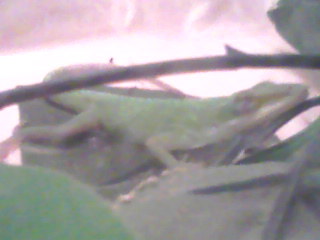 I think my Green Anole is sick
QuestionQUESTION: I have noticed two days ago that my a
I think my Green Anole is sick
QuestionQUESTION: I have noticed two days ago that my a
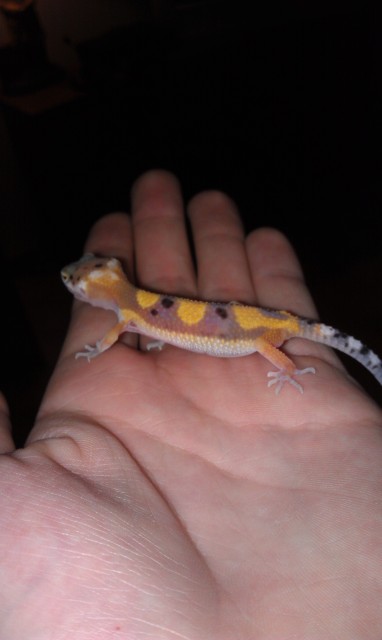 Vomiting Gecko
QuestionQUESTION: Hey Tracie,
Its Sean sorry I couldnt
Vomiting Gecko
QuestionQUESTION: Hey Tracie,
Its Sean sorry I couldnt
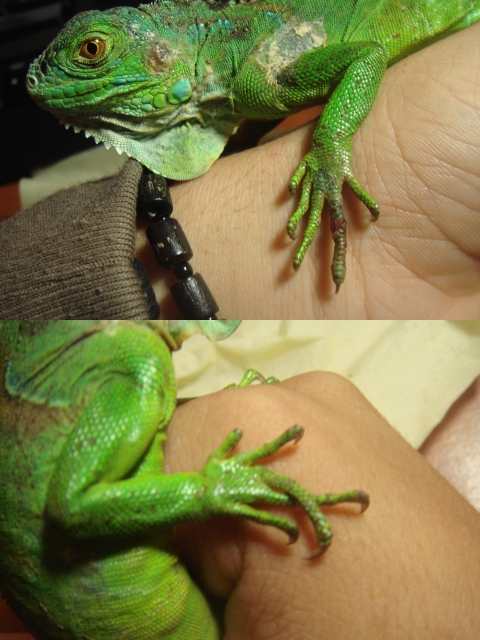 Iguana toe problem...
Question
toe problems
Hey there,
I adopted a baby iguan
Iguana toe problem...
Question
toe problems
Hey there,
I adopted a baby iguan
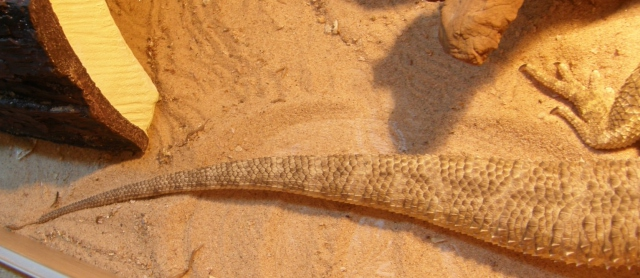 Off balance beardie?
QuestionQUESTION: So im quite worried at the moment, wi
Off balance beardie?
QuestionQUESTION: So im quite worried at the moment, wi
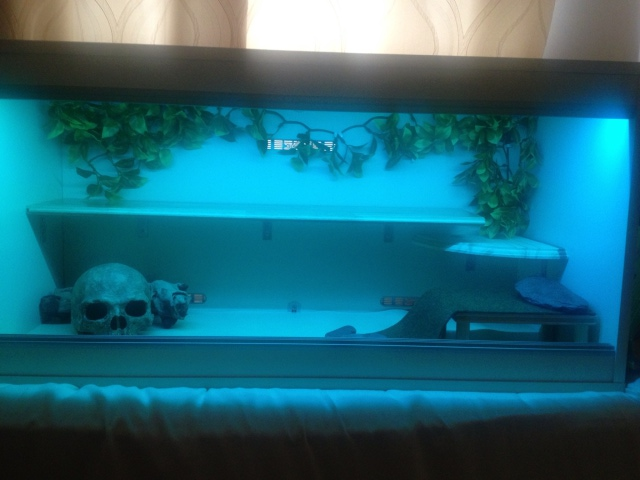 leeloo leo gecko
Questionviv
viv
QUESTION: Hi Tracie,
Yo
leeloo leo gecko
Questionviv
viv
QUESTION: Hi Tracie,
Yo